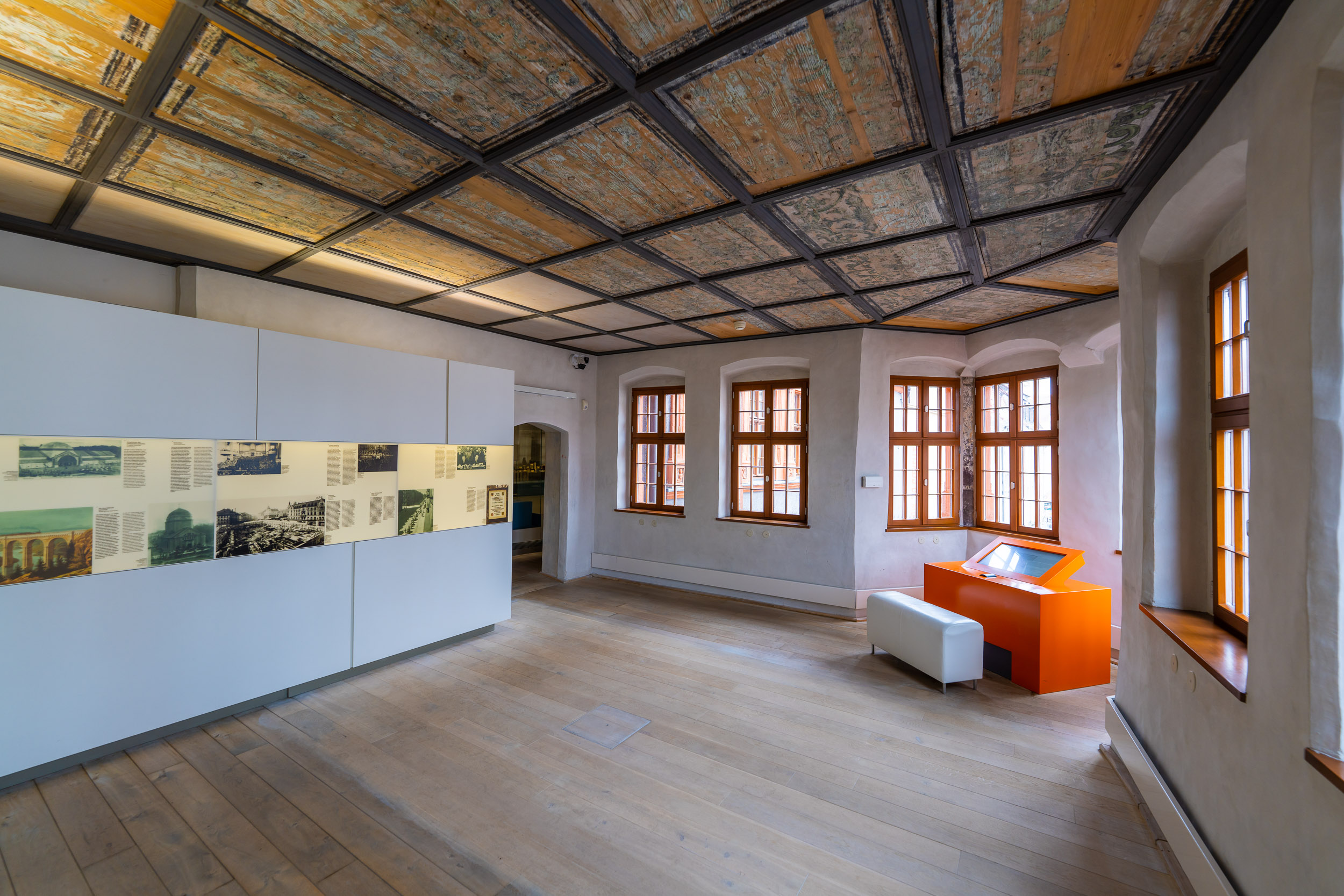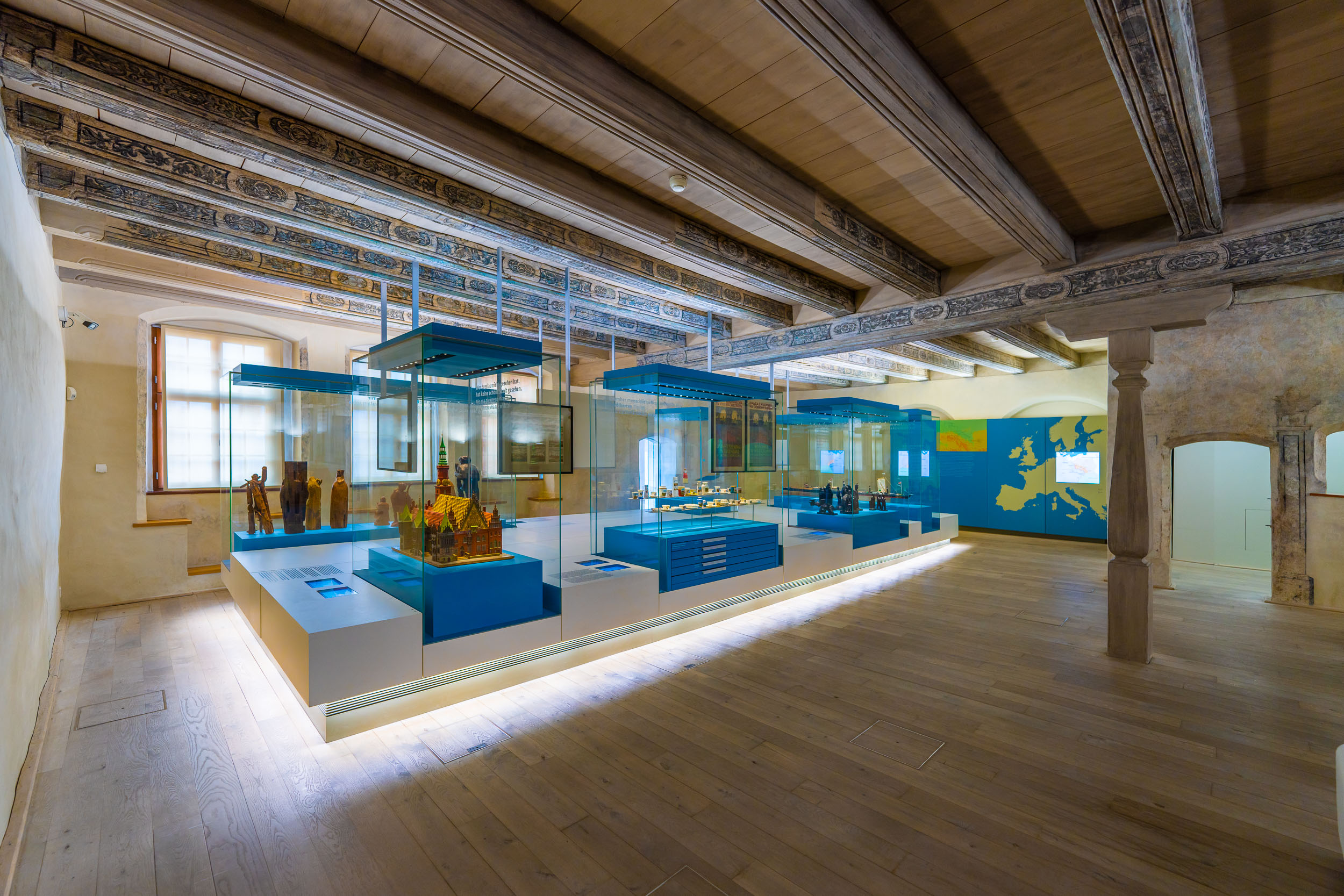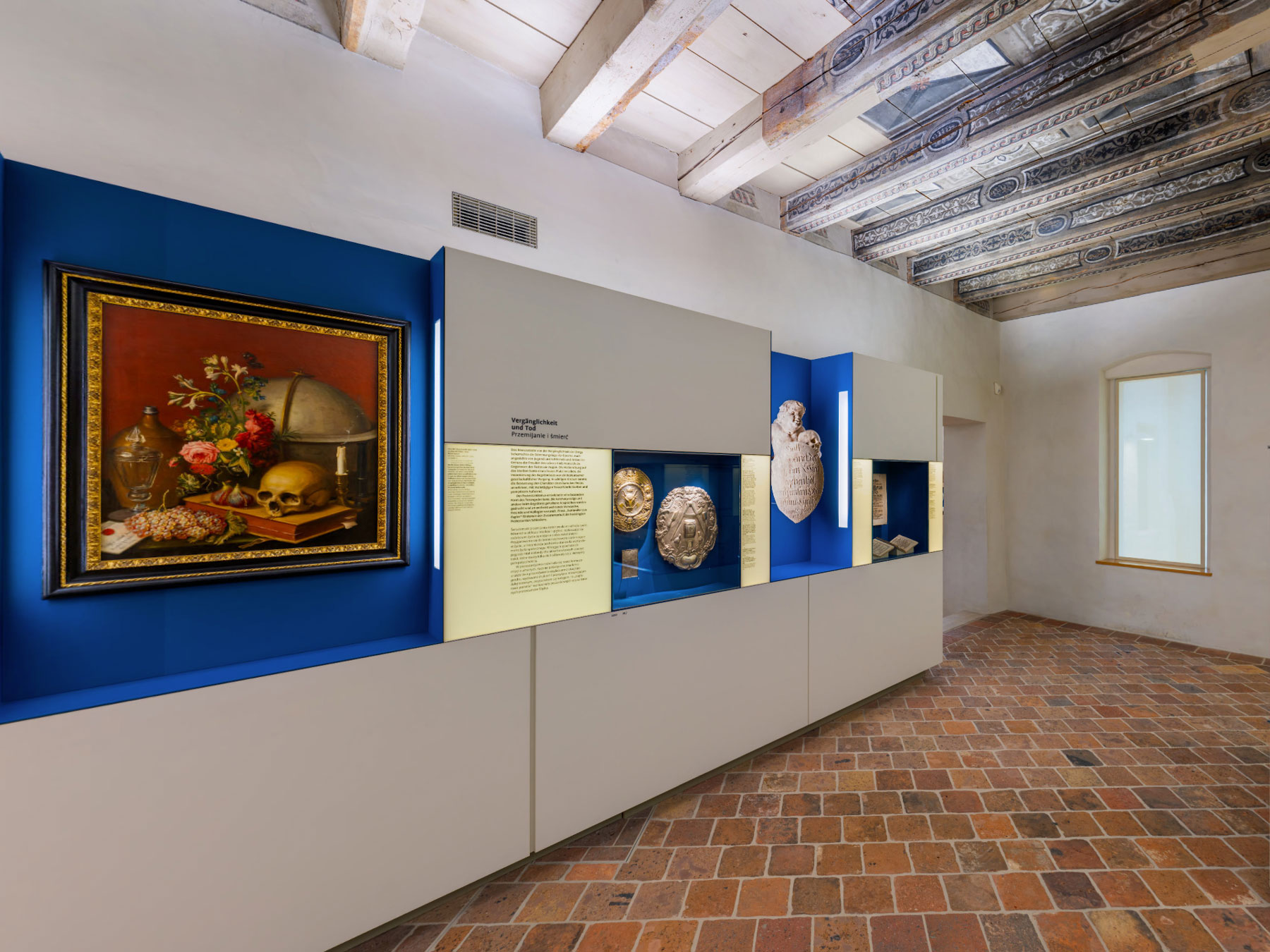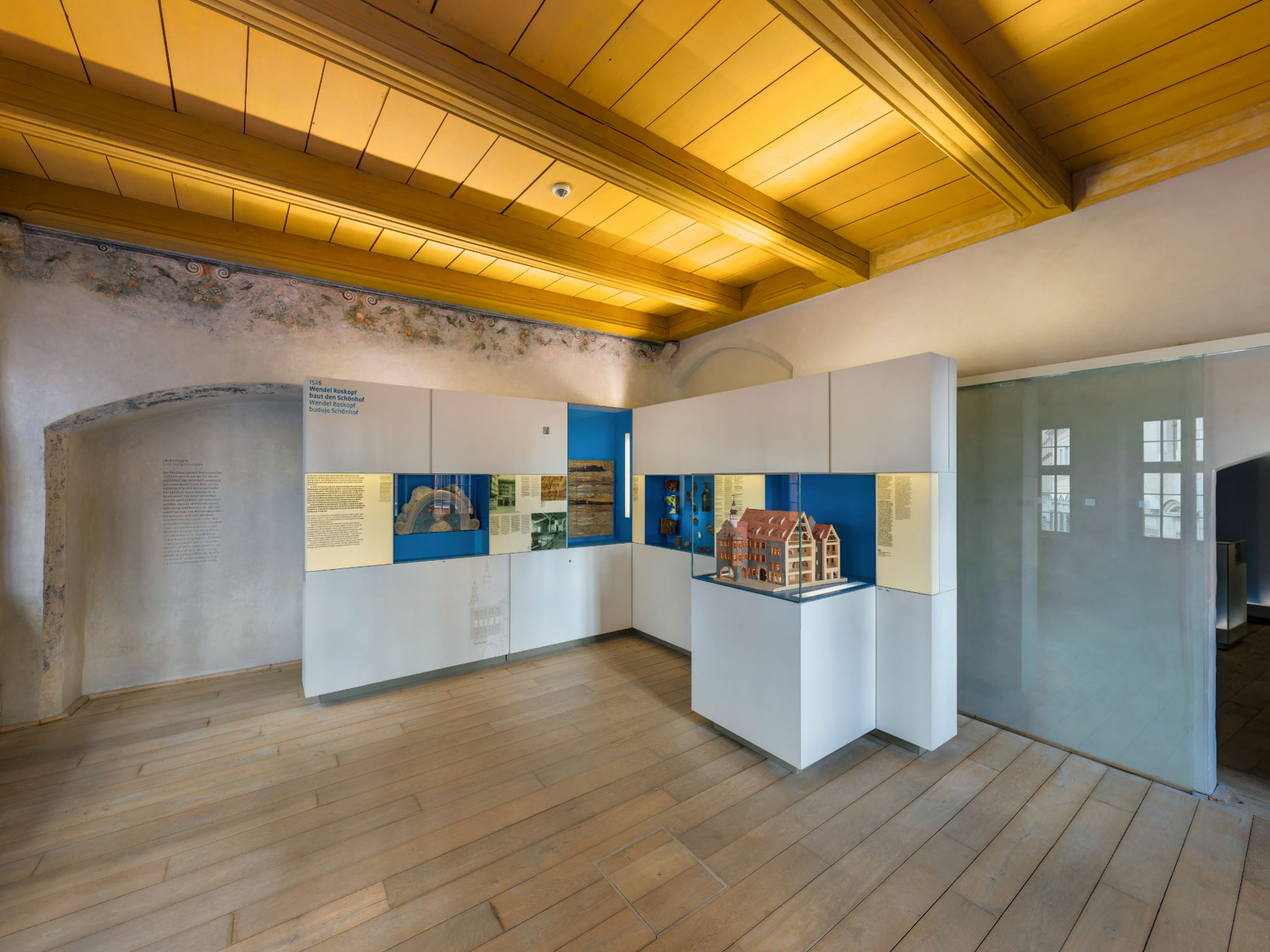
Görlitz in Silesia
Photographs
Gigapanoramas
Görlitz and Silesian Upper Lusatia
For centuries, Görlitz was the most important trading town in eastern Upper Lusatia and had close economic and cultural ties to neighbouring Silesia. However, between 1815 and 1945, Görlitz was a Silesian town in the constitutional sense. Room 2 of the Schönhof, from whose bay window you can see the Görlitz town hall steps, is dedicated to this era.
In 1815, the north-eastern part of Upper Lusatia fell to Prussia. The area, which extended to Hoyerswerda and Ruhland in the west and to Lauban in the east, became part of the Prussian province of Silesia. A facsimile of the “Peace Treaty” between Saxony and Prussia dated 18 May 1815 is on display here.
The Prussian-Silesian influence, which lasted for decades, did not remain without consequences for Görlitz. After the Second World War, the political ties to Central Silesia were severed. The new border demarcation between Poland and Germany on the Oder-Neisse line and the expulsion of Germans from the now Polish territories resulted in thousands of Silesians travelling west across the Neisse. Many of them settled in Görlitz and stayed for good.
The memory of Silesia, which was suppressed and taboo in the GDR until 1989, was revived after the political change and is now linked to the hope of a common European future for the German-Polish-Czech region on the Oder and Neisse rivers.
See similar attractions!
On a 2000 m2 exhibition space, visitors can explore approximately 1000 exhibits from the history of Silesian culture.
)
)
)
)